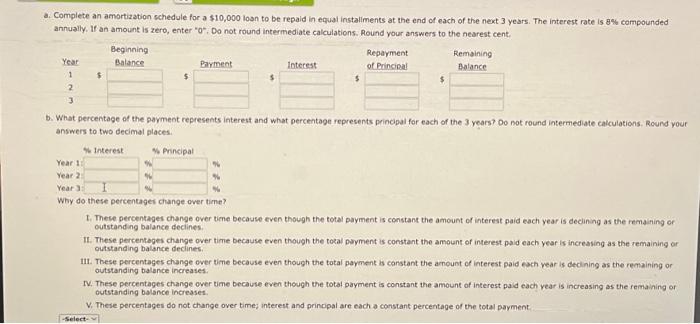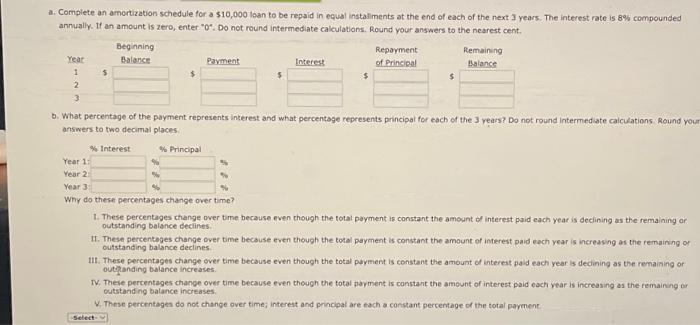Answered step by step
Verified Expert Solution
Question
1 Approved Answer
a. Complete an amortization schedule for a $10,000 loan to be repaid in equal installments at the end of each of the next 3 years.
a. Complete an amortization schedule for a $10,000 loan to be repaid in equal installments at the end of each of the next 3 years. The interest rate is 8% compounded annually. If an amount is zero, enter "0". Do not round intermediate calculations. Round your answers to the nearest cent. Year 1 2 3 $ Beginning Balance % Interest $ % % Year 1: % Year 2: Year 3: I % Why do these percentages change over time? % % -Select- Payment % Principal $ b. What percentage of the payment represents interest and what percentage represents principal for each of the 3 years? Do not round intermediate calculations. Round your answers to two decimal places. Interest $ Repayment of Principal $ Remaining Balance I. These percentages change over time because even though the total payment is constant the amount of interest paid each year is declining as the remaining or outstanding balance declines. II. These percentages change over time because even though the total payment is constant the amount of interest paid each year is increasing as the remaining or outstanding balance declines. III. These percentages change over time because even though the total payment is constant the amount of interest paid each year is declining as the remaining or outstanding balance increases. IV. These percentages change over time because even though the total payment is constant the amount of interest paid each year is increasing as the remaining or outstanding balance increases. V. These percentages do not change over time; interest and principal are each a constant percentage of the total payment.


Step by Step Solution
There are 3 Steps involved in it
Step: 1

Get Instant Access to Expert-Tailored Solutions
See step-by-step solutions with expert insights and AI powered tools for academic success
Step: 2

Step: 3

Ace Your Homework with AI
Get the answers you need in no time with our AI-driven, step-by-step assistance
Get Started


